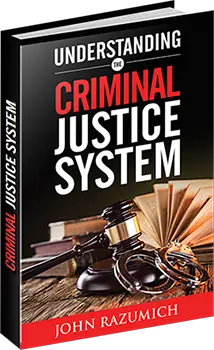On July 16th, a federal judge in California held that state’s death penalty system to be unconstitutional. District Court Judge Cormac J. Carney held that California’s system was so arbitrary and plagued with delays (about 40 percent of the state’s death row inmates have been there for more than 19 years) that it “violates the Eight Amendment’s prohibition against cruel and unusual punishment.”
The day before that decision, Marion County prosecutor Terry Curry announced that he would be seeking the death penalty against one of the defendants charged in the February 20th slayings of four people on Indianapolis’ south side.
Indiana Executions Are Rare
In light of both of these events, I thought I would take the opportunity to discuss the death penalty in Indiana. As a preliminary matter, it’s important to note that the death penalty is extremely rare in Indiana. Currently, Indiana’s Death Row holds 13 inmates. The last execution in Indiana was on December 11, 2009, and the last execution order entered in Indiana was on November 11, 2013. Since the death penalty was reinstated in 1977, Indiana has sentenced 97 people to death, and executed 20 individuals. Currently, death penalty requests are filed by the State less than twice per year, on average, from 2008 to the present.
“Aggravating Factors”
To seek a sentence of death or life imprisonment without possibility of parole, the State files a second page to the charging information indicating that it will be seeking either of these penalties. This second charging information requires that the State allege that at least one aggravating factor is present, which could include:
- the murder involved intentionally killing the defendant during the commission of a serious felony, such as arson, robbery, rape, burglary, child molesting, or kidnapping;
- the murder was the result of an ambush or a hired killing;
- the victim was dismembered or mutilated;
- the victim was less than 12 years old;
- the murder was the result of a drive-by shooting;
- the victim was a known witness in a criminal trial;
- the victim was pregnant and the murder resulted in the death of the fetus as well.
In order to be eligible for the death penalty, the defendant in a murder case must have been at least 18 at the time of the killing. If the defendant was at least 16 years of age, but less than 18, the State can only request that the defendant be sentenced to life imprisonment without the possibility of parole. Additionally, the state of Indiana will not execute a person with a mental retardation.
Bifurcated Trials
Murder trials are bifurcated. In the event that a jury finds the defendant guilty of murder in a death penalty case, the court then reconvenes the jury to make the determination of the sentence. At this point, the jury is actually informed of the possible sentences that could be imposed, including the statutory amount of time that each conviction that was entered against the defendant carries, the possibility of consecutive or concurrent sentences, and the applicability of good time credits or clemency. The court would then advise the jury that to recommend the death penalty or life imprisonment, they would need to find at least one of the aggravating factors alleged by the State to be true beyond a reasonable doubt.
If the jury reaches a sentencing recommendation, the Court is required to sentence the defendant according to the jury’s recommendation. This is the only time that a jury actually gets to decide the sentence. If the jury is unable to reach a recommendation after reasonable deliberations, the Court will dismiss the jury and make the determination of the appropriate sentence on its own.
By design, obtaining and actually carrying out a death sentence is a pretty complicated process, and the expense involved in pursuing a death penalty trial and the associated appeals have made it a less desirable punishment in the eyes of many prosecutors. The increasing number of individuals who have been exonerated on newly discovered evidence (such as DNA or concealed evidence by prosecutors) have also made many prosecutors more reluctant to pursue this option, as evidenced by the significant decline in death penalty requests. The recent California decision mentioned above, while having no controlling effect on Indiana, will likely spur further review of how and when the death penalty is applied in states across the nation.
The laws governing legal advertising in the state of Indiana require the following statement in any publication of this kind: “THIS IS AN ADVERTISEMENT.” This website is designed for general information only. The information presented at this site should not be construed to be formal legal advice, nor the formation of a lawyer/client relationship.






